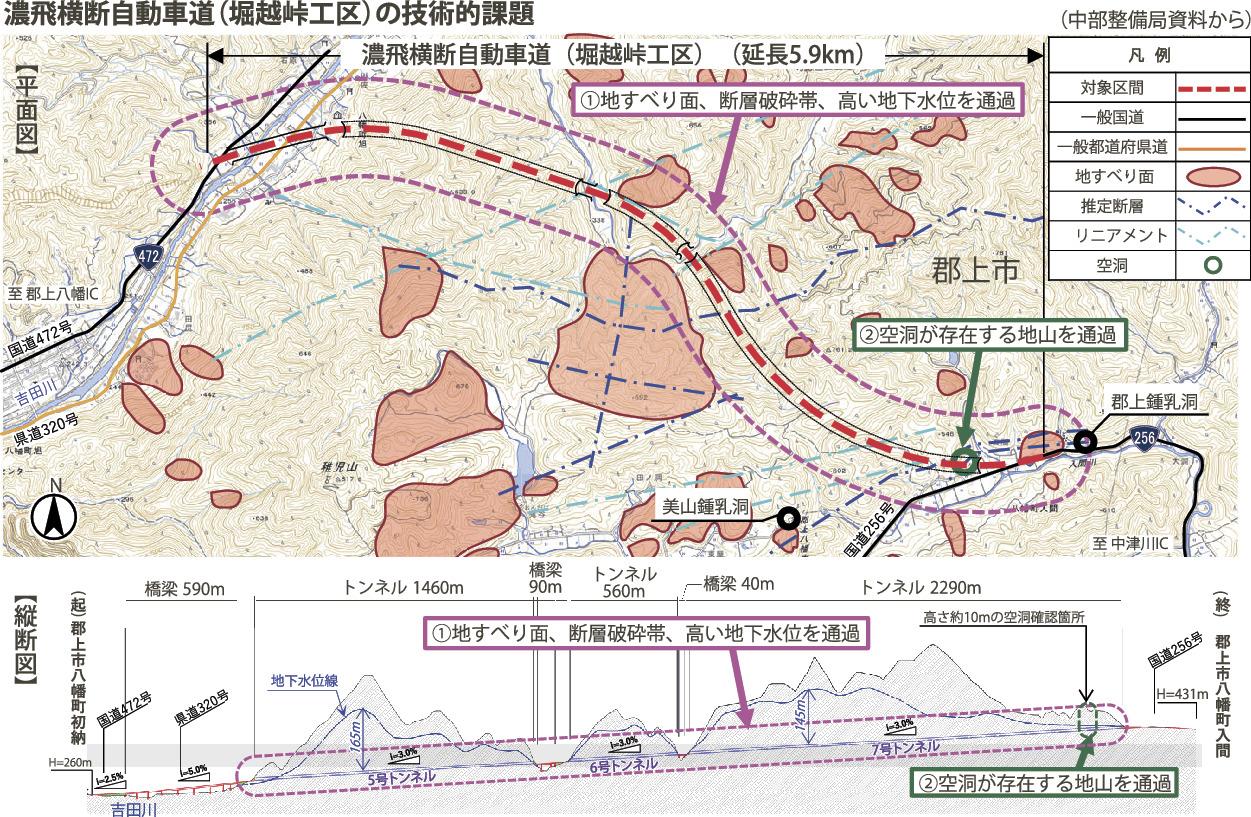Chubu Development Bureau / Horikoshi Pass section of the Nohi Odan Expressway Business possible with high technology, sent direct control survey results to Gifu Prefecture

The Chubu Regional Development Bureau sent Gifu Prefecture the results of a survey conducted in fiscal 2022 under the direct control of the approximately 5.9 km section of the Nohi Odan Expressway (Horikoshi Pass Construction Area). Since the tunnel will pass through a mountainous area with landslide surfaces and fault fracture zones, the project will be possible if advanced technical capabilities such as stability analysis during construction and stability measures against multiple risks are utilized. In response to this, if the prefecture requests the national government to carry out construction on behalf of authority, the Chubu Development Bureau will implement it as a project under its direct control.
The Nohi Odan Expressway is a regional high-standard road that stretches for about 80 kilometers from Gujo City to Nakatsugawa City via Gero City. Of these, the Horikoshi Pass construction area is a route that connects Hatsuno and Iruma in Hachiman-cho, Gujo City. maintain.
According to the results of a direct investigation, there are landslide surfaces and fault fracture zones along the route, and the groundwater level is also high. There is also a cavity near the entrance. During tunnel construction, there are risks such as deformation of the tunnel lining and sliding down of the face and crown due to sliding of the ground and loosening of the ground due to sudden spring water. For this reason, it was necessary to conduct stability analysis and forward exploration in parallel with tunnel construction, and to select appropriate ground stabilization measures that have multiple risks.
Because cavities have been confirmed along the route in the ground where limestone caves exist, there is a risk of rock masses falling from the cavities at the top of the tunnel and sediment outflow. For this, it is necessary to look ahead during construction, check the range of cavities with a 3D laser scanner, and fill cavities with cement or urethane foam. If a cavity is confirmed at the bottom of the tunnel, separate countermeasures will be considered.
The prefecture will promptly decide on a response policy. If a request is made to the national government to carry out construction on behalf of the authority, the Central Development Bureau will go through the necessary procedures and commercialize it as early as fiscal 2023.






